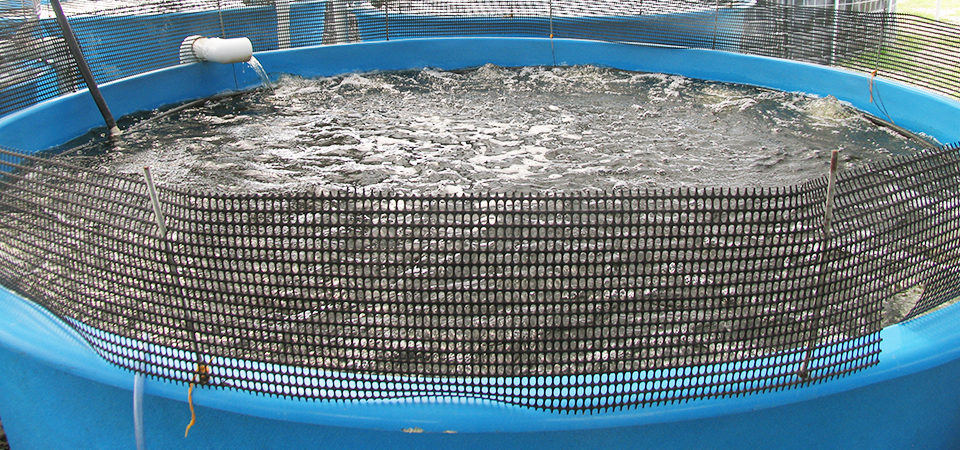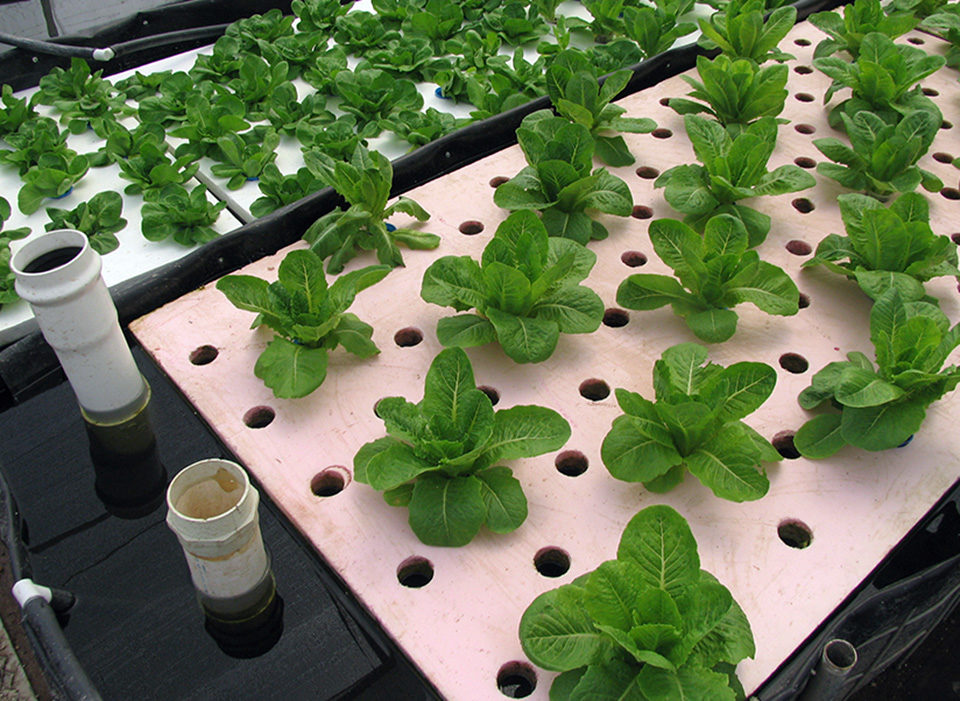Options range from simple organic setups to complex aquaponics

Aquaculture has always interested hobbyists, and many have tried small-scale growout of fish in an aquarium, small pond or tank. Now, with the downturn in the global economy, there seems to be an increased interest in back-yard aquaculture. Individuals all over the world have demonstrated a renewed attention to growing their own food to supplement their needs. There appears to be a great desire to be self-sufficient, and many are doing so by raising fish on a small scale to provide for individual needs.
Back-yard aquaculture refers to growout systems that are larger than home aquariums but less than about 0.4 ha in area. These systems are usually modeled after larger commercial growout systems. There is no limit to the variety of designs available for back-yard systems. They range from something as simple as a small stand-alone tank to very complex automated systems using sophisticated water treatment equipment.
System types, species
Back-yard aquaculture can be generally classed according to the water temperature. Coldwater aquaculture requires water temperatures of 10 to 21 degrees C with the optimum temperature between 12 and 17 degrees C. The most popular species of fish grown in coldwater back-yard systems are trout and salmon.
Warmwater aquaculture requires water temperatures between 18 and 32 degrees C with the optimum temperature between 27 and 30 degrees C. The most popular species of fish grown in these conditions are bass, sunfish, catfish, tilapia and carp. Additional species can be considered in varied parts of the world.
Climatic conditions, geographic location and environmental factors must be considered when selecting the best species of fish for back-yard aquaculture. Tilapia, one of the easiest fish species to raise, is growing in popularity around the globe where climatic conditions and water temperature are right.
Tilapia can tolerate variable water quality, including fairly low dissolved-oxygen levels. In addition, tilapia grow relatively quickly on a low-protein diet and readily breed in captivity. They are fairly easy to handle and are widely accepted as food fish. In some areas, tilapia are preserved by drying or salting, and may be smoked or pickled.
System components
Most back-yard aquaculture projects use recirculating systems, although other systems have been developed for growout in cages, raceways and ponds. Some of the more popular water containment approaches include aquariums, lined and unlined ponds, barrels, swimming pools, water troughs, and steel or fiberglass tanks. Water depths are usually about 0.75 to 1.00 m, although shallower tanks can also be used.
Because fish spend all of their lives in water, it is very important to maintain good water quality. If the water is not treated, very little production may be expected. Aeration and filtration are required for increased production. Beginners often start with lower densities of fish and increase production as they gain confidence in their systems and equipment. It is also a good idea to have emergency back-up systems to insure that aerators and pumps run during blackouts.

Aquaponics
An increasingly popular type of back-yard aquaculture is aquaponics, a combination of aquaculture and hydroponics for the production of both aquatic animals and plants. In aquaponics, the water is cycled from the fish tank into trays or beds holding plants. The plants utilize the nutrients in the water, and the “treated” water is returned again to the fish tank.
Greenhouse aquaponics can be fairly complicated, requiring a high level of management and equipment. Many of these back-yard aquaponics systems use a recirculating setup. These systems include additional equipment like filters or clarifiers to remove solids, degassing columns, aeration systems and dosing systems that add chemicals required by the plants.
Some back-yard aquaponics systems are very simple but can still be very productive. The goal of many of these producers is organic food production. They desire an efficient system that uses little power while producing both fish and vegetables to eat. Because fish are living in the water, aquaponics systems are typically organic, and no herbicides, insecticides or fungicides are used.
These systems can combine a variety of plants and fish depending on location and conditions. Tilapia, trout, catfish or hybrid striped bass can be grown with vegetables such as tomatoes, lettuce, cabbage, beans, basil, peppers and cucumbers.
Additional considerations
Back-yard aquaculture systems require special permits in some locations. It is the owners’ responsibility to become familiar with local and national laws regarding home aquaculture systems and determine if permits and/or registration are required. They should consider laws regarding water sources, water use and wastewater discharge; permits required to hold, produce and sell fish; and laws regarding the location of back-yard aquaculture facilities.
(Editor’s Note: This article was originally published in the September/October 2009 print edition of the Global Aquaculture Advocate.)
Now that you've finished reading the article ...
… we hope you’ll consider supporting our mission to document the evolution of the global aquaculture industry and share our vast network of contributors’ expansive knowledge every week.
By becoming a Global Seafood Alliance member, you’re ensuring that all of the pre-competitive work we do through member benefits, resources and events can continue. Individual membership costs just $50 a year. GSA individual and corporate members receive complimentary access to a series of GOAL virtual events beginning in April. Join now.
Not a GSA member? Join us.
Author
-
Gary Rogers, Ph.D., P.E.
Vice President of Engineering
Aquatic Habitats Inc.
2395 Apopka Boulevard
Apopka, Florida 32703 USA[109,111,99,46,111,99,101,99,105,116,97,117,113,97,64,114,121,114,97,103]
Tagged With
Related Posts

Health & Welfare
Do probiotics work in aquaculture?
Probiotics administered in feeds provide competitive exclusion of pathogenic bacteria, create conditions unfavorable for pathogens and modulate intestinal immune responses.

Intelligence
An engineer’s design for a classroom aquaculture-aquaponics system
An aquaponics teaching system was designed, built and operated by students at the University of Arizona, integrating its operation and management into the educational curriculum. This engineering design will require minimum maintenance and will last years.

Intelligence
Young aquaponics, aquaculture company gets big boost
Fluid Farms, an aquaponics produce grower in Maine, leans on multi-trophic aquaculture to provide nutrients for its plants. The company is now selling its hybrid striped bass to the local market and, armed with a $50,000 innovation prize that will fund a new heating system, is expanding its horizons.

Responsibility
Haiti’s hatchery of hope
Built on a dream of feeding some of the world’s poorest and most vulnerable people, a charity-built tilapia hatchery in Haiti now learns to stand on its own.


